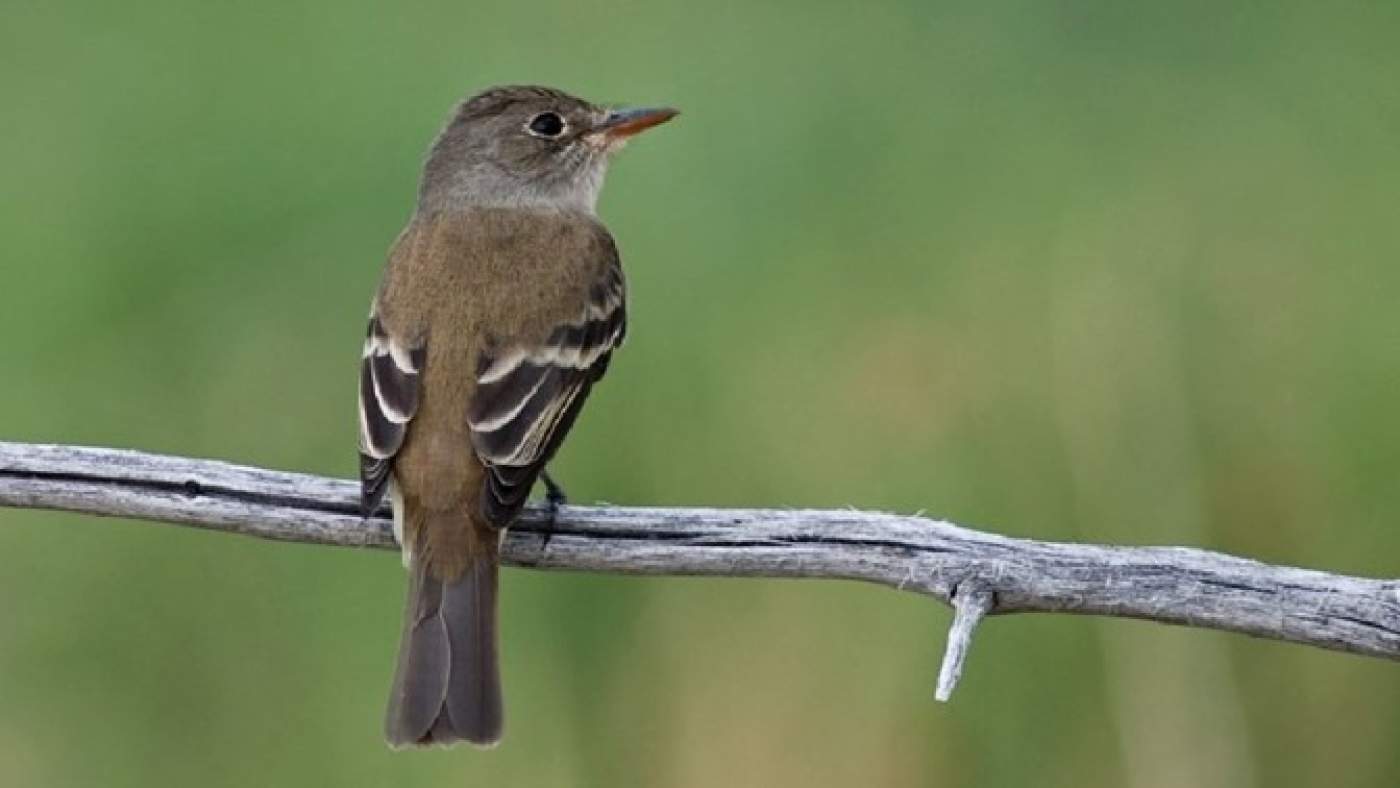Southwestern Willow Flycatcher - Yearly Research Synthesis
(May 15, 2023 – May 14, 2024)
Habitat and Ecology
The endangered Southwestern Willow Flycatcher (SWFL) depends on complex riparian ecosystems. The subspecies uses both native and tamarisk habitats for breeding and while tamarisk supports fewer species, 49 bird species, including SWFL, have been documented using it as breeding habitat. However, tamarisk removal may unpredictably affect overall habitat quality as native species do not always reestablish quickly, emphasizing the need for careful monitoring before control efforts (Sogge, Sferre, & Paxton, 2008).
Habitat Influences
Recent studies highlight that SWFL habitat availability is influenced by precipitation, streamflow patterns, and human alterations of hydrological regimes. Research along the Gila River reveals that native riparian areas are more resilient to the impacts of Tamarisk Beetles and should be prioritized for conservation. Managers should carefully consider changes to natural flow regimes, especially during low-flow periods, to ensure the long-term survival of these habitats in the Southwest (Hatten, Holmes, & Johnson, 2024).
Restoration and Conservation
In 2018 and 2019, no SWFL were detected along the Santa Cruz River (SCR) despite extensive surveys across predicted suitable habitats. Drought conditions from 2014-2017 likely contributed to the decline in flycatcher populations and the reduction in suitable breeding habitats. However, habitat availability improved in 2019, marking the highest amount of suitable habitat since 2009, offering hope for future population recovery. Restoration efforts, including Arundo removal and the planting of willow stands, alongside reduced cowbird populations, are enhancing habitat conditions. Future conservation efforts are advised to prioritize habitats identified with over 60% probability models, which were more accurate than 40% probability class projections for determining suitable habitats (Hall et al., 2020).
Biocontrol and Ecosystem Resilience
An 8-year study in Moab, Utah, examined the effects of tamarisk defoliation by tamarisk beetles (Diorhabda carinulata) on riparian vegetation. Results show that vegetation resilience is driven more by precipitation variability than by tamarisk defoliation. This suggests that tamarisk biocontrol does not significantly impact overall ecosystem function (Henry et al., 2023).
Genetic Adaptation and Climate Change
SWFL populations have shown genetic adaptation to climate change. Whole-genome comparisons of historic and modern specimens from California indicate gene flow between populations in California and Arizona. While introgression led genomes of these populations to become more similar, the specific loci linked to climate shifted in a way consistent with climate adaptation. This highlights the role of inter-population gene flow in adapting to environmental changes (Turbek et al., 2023).
Subspecies Delineation
SWFL subspecies delineation continues to improve. While geographic variation in flycatcher plumage, song, ecological setting, and some mitochondrial DNA data have all been used to delineate between willow flycatcher subspecies, recent studies using many more loci on mitochondrial DNA have provided important insight into genetic differences between E. traillii subspecies (Forester & Lama, 2023).
Behavior
For southwestern willow flycatchers, higher minimum song frequency was associated with greater nest success and more fledglings, suggesting that song may be an honest signal for male quality in suboscine species (Mahoney et al., 2024).
Visit the Resource Center here and the Improving Flycatcher Habitat section here.

